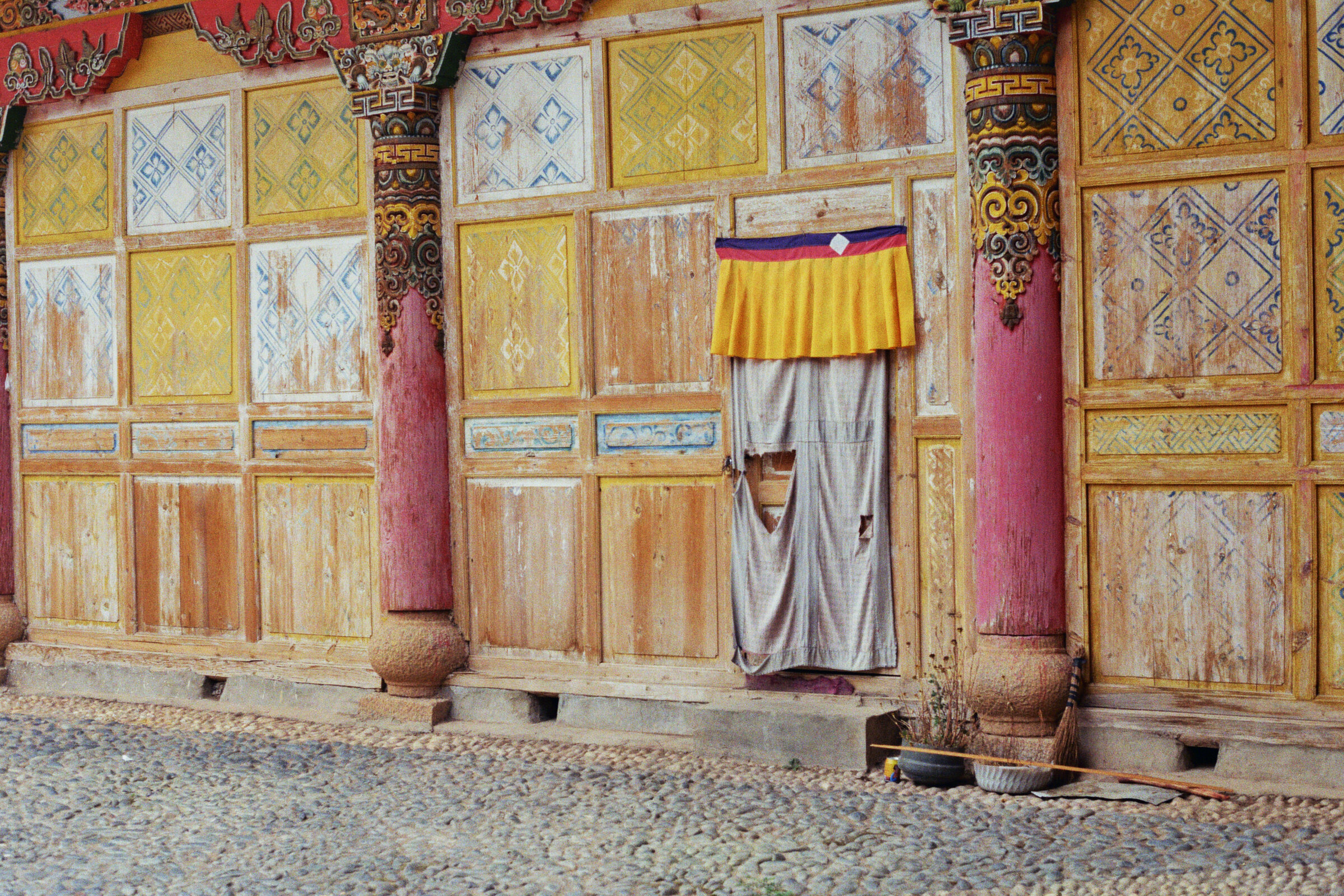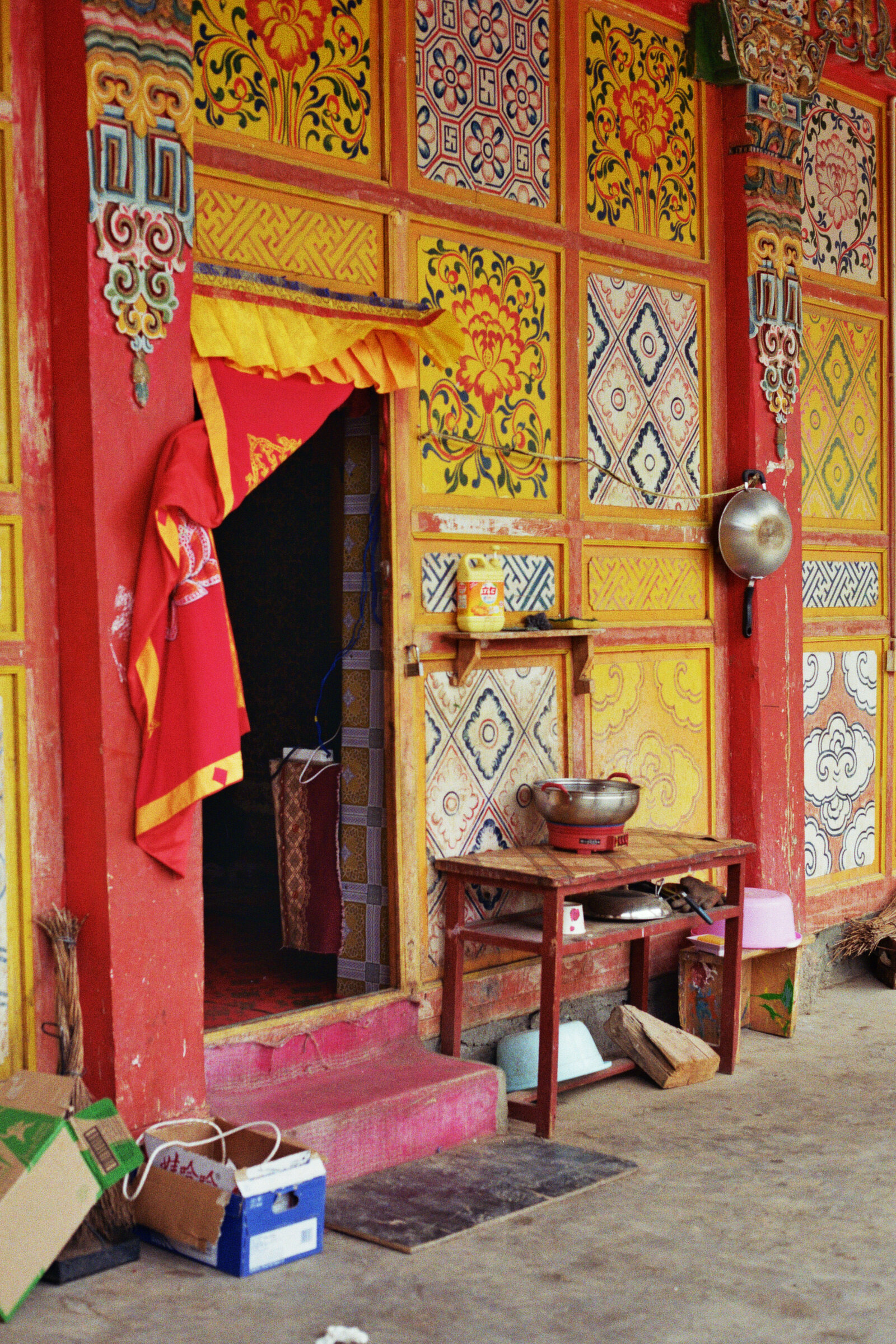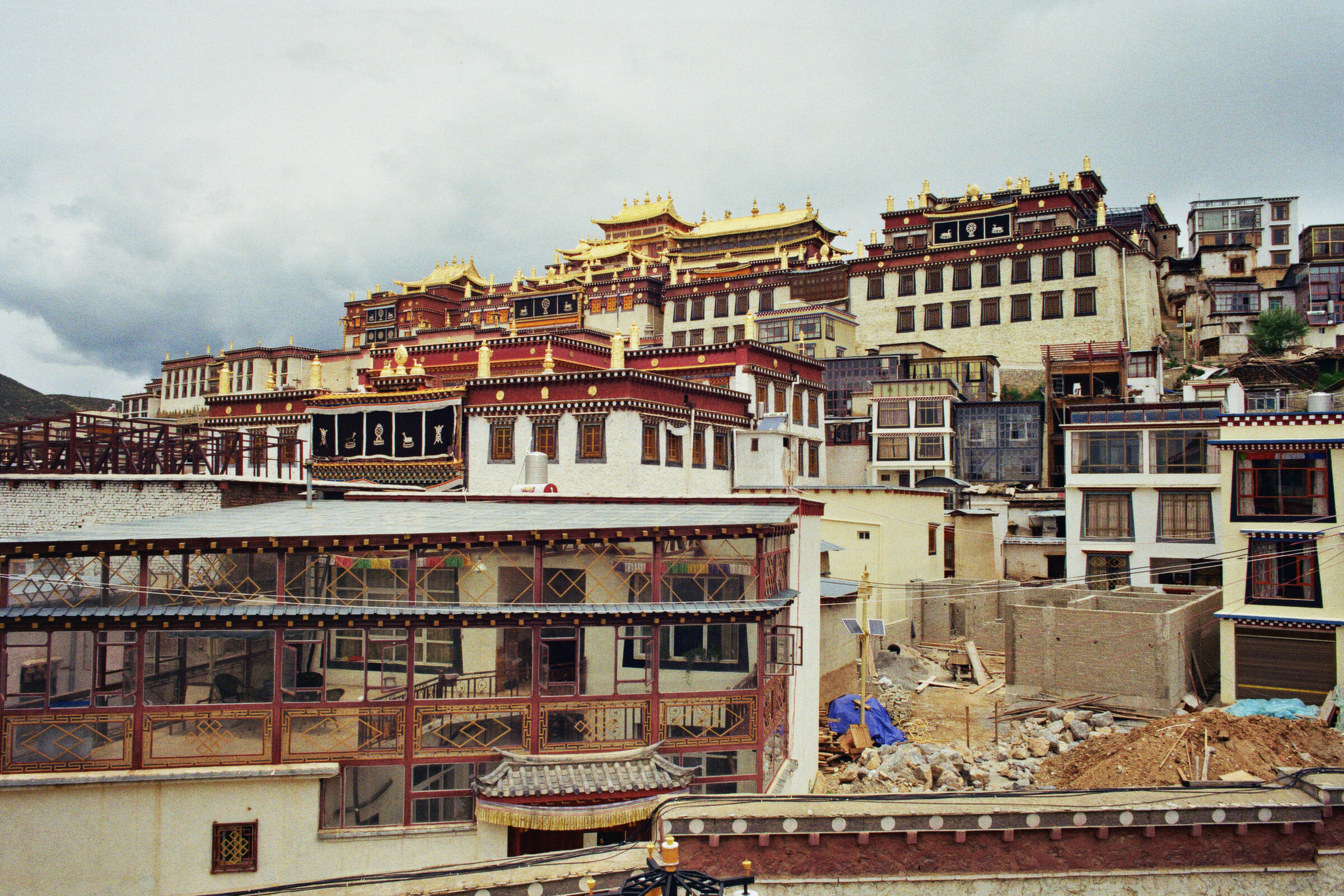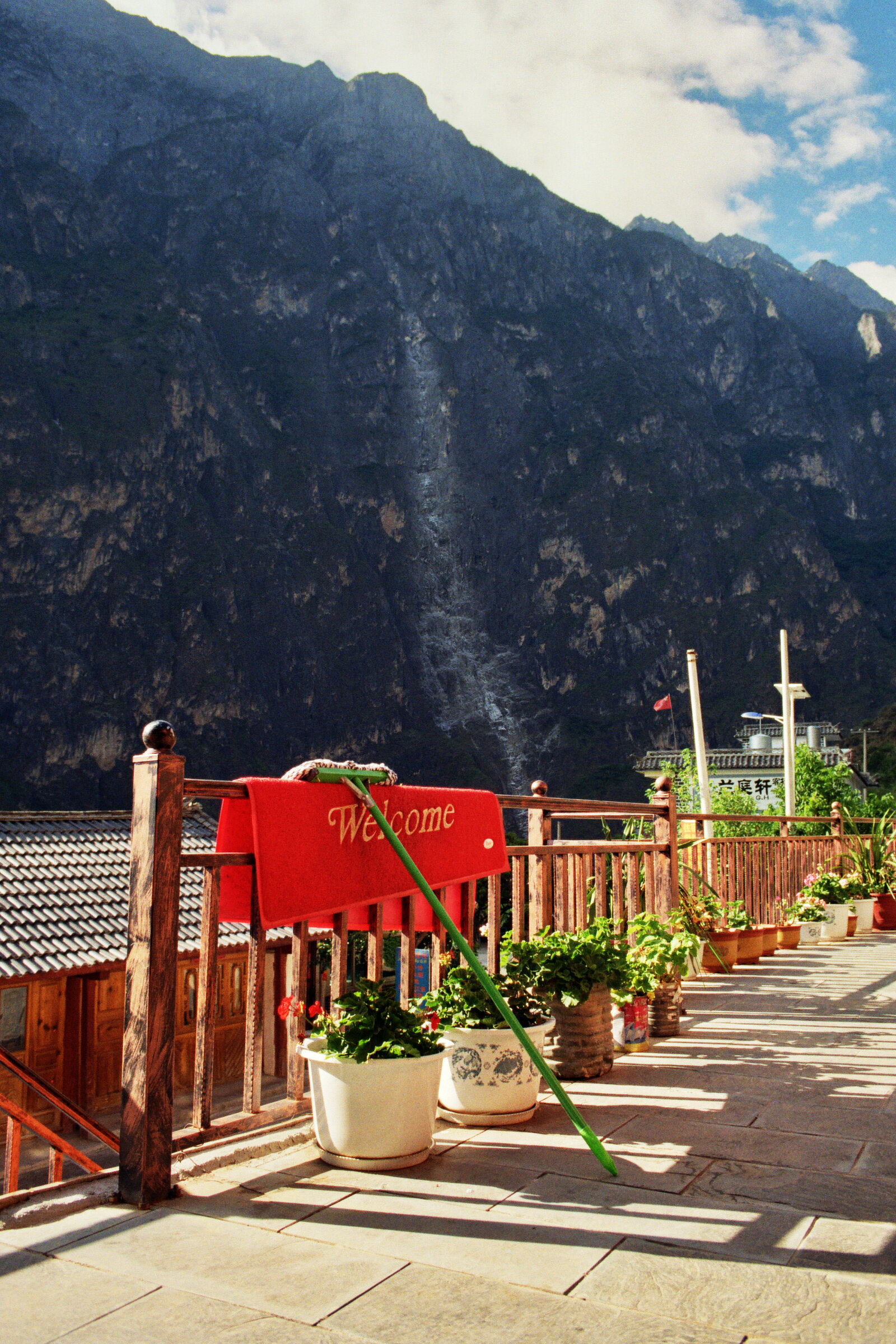Shangri-La
Yunnan Province, China
June 2018
Shangri-La was our last stop in Yunnan province, and the beginning of our travels through the culturally Tibetan part of China. It was also the beginning of traveling at high elevations (3,160 m). (We would be getting to a higher elevation with every stop on our way to Litang and Tagong in Sichuan and we were making our way slowly and in steps, to avoid high altitude headaches and such). Shangri-La is where Yunnan, Sichuan and Tibet meet. The drive into Shangri-La was through green grasslands surrounded by grey mountains on a cloudy day. We saw yaks for the first time on that drive, and the distinctive and colourful architecture of Tibetan farmhouses. That landscape is incredibly beautiful but I didn’t get any pictures. There are no trains in this part of China so we were on long distance buses and as we got closer to Shangri-La I really began to feel far from the world I knew and so so happy about it.
At dusk in Shangri-La, and in many of the towns in this part of China that we visited, people dance choreographed dances in a large circle in the public squares to extremely loud music blasted out of portable speakers. As a foreigner it’s a very joyful thing to watch. Everyone knows all the moves, knows the songs.











































